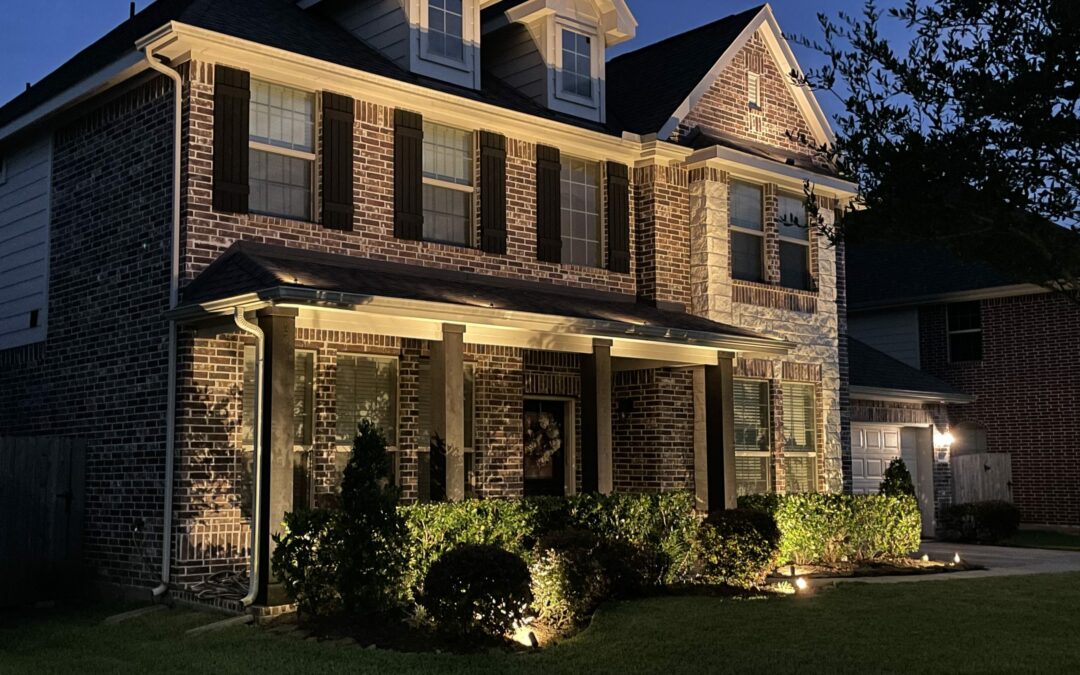Alexander Michael’s Garden, Landscape, And Outdoor Lighting take pride in our knowledge and experience with the different techniques for outdoor lighting. We use our expertise to employ each of these techniques to achieve the most effective results. Our design process is much more than placing a bunch of accent fixtures around your home and calling it a “design”. We consider our customer’s lighting objective, the size, and placement of landscaping, the color scheme of the home, the size of the trees, and the overall size of the property.
The two most common design flaws that I have observed are:
- Incorrect placement of fixtures; In particular, the incorrect aim of the fixture. Most fixtures have lamps (bulbs) that come in a variety of spread widths, from 15 degrees to 120 degrees! The correct spread should be considered when designing the layout and overall lighting objective.
- Every square inch of your landscape or home does not need to be illuminated. An effective design will have layers of lighting, highlighting focal points of the property. So, of the 8 primary lighting techniques, the following are my favorite: (We will cover other techniques in future articles)
With the proper fixture placement and the correct light spread, the shadowing effect is a dramatic look. Not only will the subject plant or bush be illuminated, but the shadowing of the plant will cast a shadow onto the backdrop behind the plant. Palm trees are a great tree to utilize this effect. The placement of fixtures and correct lamp spread is critical with this technique. I’ve included pictures of this technique at the end of this article.
My absolute favorite! This technique is not for the installer who is afraid of heights, as it requires climbing into the canopy of a large tree. We use a wide beam specialty fixture that simulates moonlight with the shadow of the canopy branches casting onto the ground below. We always use climbing safety gear. This type of installation brings me back to my childhood tree-climbing days! The approach is straightforward. It also requires a couple of conditions:
-
- The tree should be large, with a wide canopy.
- There MUST be a significant branch pattern from the middle of the canopy to the ground. It’s important that the fixture is installed high enough in the tree to allow the light to filter down through limbs and branches to create this shadowing.
Path Lighting is an effective way to tie the lighting design together I recommend using a staggard pattern alternating sides of the pathway. Remember though, you DO NOT want single-stemmed pathway lights installed in grassy areas, as whoever mows your grass is likely to destroy the fixture. There are several fixture choices that will alleviate this potentially costly issue, including larger bollards and low-profile fixtures.
Click Here to Contact Alexander Michael’s Garden, Landscape, and Outdoor Lighting to schedule your free design consultation today.



